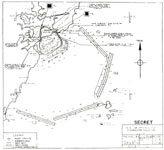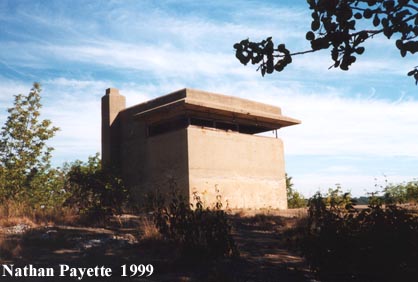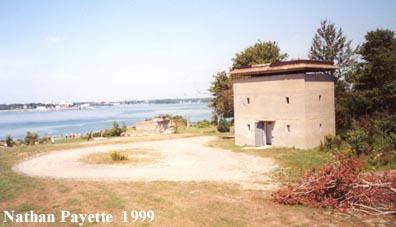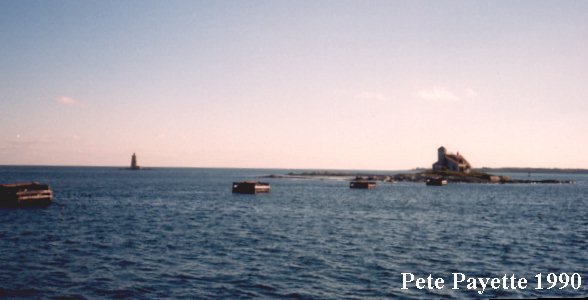
digital scan courtesy of Jon Woolf
1945 Chart of the Underwater Defensesclick for larger image
Minefields of submerged (ground) and/or floating (buoyant) mines were "planted" in Portsmouth Harbor by the U.S. Army Corps of Engineers during the Spanish-American War, and by the U.S. Coast Artillery during both World Wars. Early mines were floating contact mines, and later models were submerged controlled mines, electrically fired from the mine casemates at either Fort Stark (1907 - 1920), Fort Constitution (1898 - 1905, 1920 - 1945) and Fort Foster (1942 - 1945). Minefield observation stations were located at Fort Stark (M' 1909 - 1921), Fort Constitution (M' 1921 - 1942) (M1 1942 - 1945), and Fort Foster (M" 1909 - 1942) (M2 1942 - 1945). The U.S. Navy took over harbor mining operations, as well as overall responsibilty for harbor defense, from 1949 to 1983. The Navy "layed" both submerged and bouyant mines at certain times.

Anti-submarine nets were also used in both World Wars, stretching from Fort Foster to Fort Stark. Anti-Motor Torpedo Boat defenses were emplaced between Fort Foster and Wood Island during WWII, where the anti-submarine nets could not be put in place. These were hidden obstructions built and placed to prevent enemy raiding boats from skimming over them at high tide. The remnants of the cribworks are still visible today.
Hydrophones and sono-buoys, controlled from Forts Stark and Foster, were used within the harbor minefield in World War II, and also after the war by the Navy to detect Soviet subs. Magnetic indicator loops, controlled from Appledore Island, were used to detect submerged enemy submarines trying to enter the harbor. The loops were deployed from Sisters' Point to the Isles of Shoals, and then back to Rye Ledge.
At least one or two armed U.S. Navy picket boats were present "on station" in the outer harbor at all times, patrolling back and forth between the Isles of Shoals and New Castle. When new submarines were launched from the Shipyard, the amount of protection by other ships naturally increased. Enemy spotting was also done by airplanes and blimps out of Portland or Boston. (see also Fort Constitution history for a short history of mining operations in Portsmouth Harbor)


The "Double" Mine Observation Tower behind Battery Bohlen at Fort Foster, built in 1942.
It served the Mine Command and Mine Gun Group Command (M2 and MG OPS 1). Now public restrooms. There is no access to the upper floor.
(see also Fort Foster photo gallery)

A contact mine that was used in the harbor.

What appears to be the remains of an old wharf are in fact the remains of the cribworks for the WWII anti-motor torpedo boat defenses.